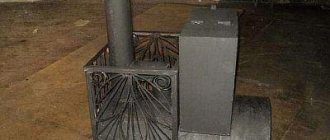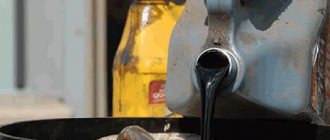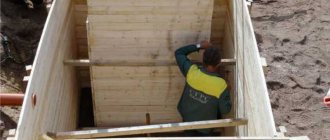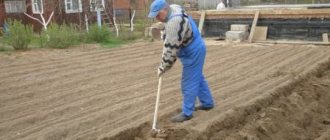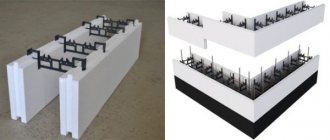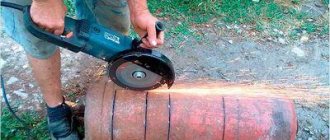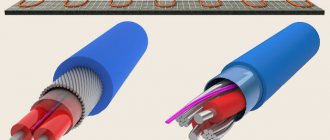Nomadic tribes began using manure as fuel for fires thousands of years ago.
It was they who discovered that dried cakes made from the dung of various animals successfully replace rather scarce firewood, which is difficult to find in the steppes or deserts.
And the heat that this type of fuel created was enough not only for cooking, but also for heating homes.
This method of using poultry and animal excrement is still applicable today, because it not only allows you to dispose of huge piles of manure , but also reduces the cost of purchasing other energy resources.
In addition, the ash remaining after burning this fuel is one of the best potassium phosphate fertilizers, as well as an excellent alkalizing agent. However, briquettes made from manure will provide maximum efficiency only when they are properly manufactured and the heating device is adapted to operate on this fuel.
Why does this material burn?
To answer this question, it is necessary to consider the feeding of animals and the processes that occur during the digestion of food.
Any food consists of proteins, carbohydrates, fats, and when fed with grass or hay, fiber (cellulose).
All these substances have one thing in common - their chemical formula contains carbon and hydrogen . In the gastrointestinal tract, chewed food mixed with gastric juice undergoes fermentation, that is, complex substances (biopolymers) break down into simple ones (monopolymers).
In this case, some of the substances are converted into compounds suitable for absorption through the intestinal walls and nutrition of the cells of all tissues of the animal or bird.
Therefore, completely digested food that has turned into feces contains quite a lot of simple organic substances , the basis of which is hydrogen and carbon.
After removing water, the share of which is 50–90 percent, what remains is a mixture of organic and inorganic substances with a fairly high calorific value, and therefore calorific value.
According to this parameter, the excrement of birds or animals in a dried state is at least not inferior to dry (15–20% humidity) firewood , and possibly even superior to them. However, we are talking about the ratio of mass and calorific value, so due to its very low density, dried manure takes up much more space.
Approximate cost calculation
Before you begin designing an installation, you must carefully calculate all upcoming costs. In some cases - harsh climate, small amount of available raw materials - it is more profitable to refuse construction.
Biogas production costs
A home mini-station will cost about 50 thousand rubles.
The costs of biogas production consist of the cost of equipment, installation and maintenance costs of installations . If purchased raw materials are used, their cost and delivery costs are taken into account.
The installation itself is purchased from a factory or made independently . Factory products are installed, configured and maintained by specialized organizations. For some models you will have to purchase consumables - fermentation activators or bacteria.
During operation, costs consist of electricity costs for mixing the substrate and heating the reactor.
Cost of a ready-made and home-made biogas plant
A farm installation will cost several hundred thousand rubles.
The industry produces biogas plants for farms. The volume of the bioreactor varies from 0.5 to 30 m³ . A ready-made system with a 1m³ , for example, BUG-M, containing all the necessary components, costs about 180 thousand rubles . Installations for farms with a herd of 12 heads of cattle or 1000 heads of poultry will cost 2 million rubles.
Few farms can afford the purchase of such equipment, so they prefer to make the installation themselves.
Home generators can cost from 50 thousand rubles , which allows you to significantly save on the purchase.
Which manure is best suited for making fuel?
Since the finished fuel is the same as manure, only in the form of cakes, briquettes or pellets, the most important parameter is its moisture content .
The less water, including urine, this material contains, the more suitable it is for making fuel. In addition, the diet of animals or birds is also of great importance.
After all, meadow grass and hay have lower calorie content than straw or grain, so feeding the latter makes the manure more calorific. In this case, the breed or even the type of animal or bird does not matter much , because after removing excess moisture they will contain approximately the same amount of organic substances.
Biofuel at home - a dream or a real possibility?
Here you will learn:
- Biogas use
- Benefits of biotechnology
- Biofuel production technology
- Gas quantity calculation
- Creating a biogas plant from manure at home
- Biogas production from organic waste as a business
Biogas from manure is a new economical method of gas supply. If there is a sufficient number of cattle on the farm, then methane can be obtained from manure to supply gas to the house. Industrial waste is an excellent fertilizer.
Biogas use
The high methane content (about 70%) makes biological gas flammable. The waste that remains after processing raw materials can be used for fertilizer - they have excellent characteristics and are completely safe in the biological sense.
Methods of processing into dry fuel
Many different methods are used to produce fuel from manure, but they all have one thing in common - the formed fuel briquettes or cakes are thoroughly dried , and one of the criteria for the readiness of such fuel is the absence of an unpleasant odor.
straw from various plants is often added to the mixture for the production of environmentally friendly fuel , thereby increasing the overall calorific value.
We will talk about all existing methods of processing manure into fuel material, including the most unusual ones, below.
Collection of dried flat cakes
The most well-known method is to cakes of naturally dried manure
along the road then kept in a well-ventilated area for several months , after which it can be used as fuel.
The finished material has a very low density, so it is difficult to store, because it takes up a lot of space.
Winter country style
Another method, which is still used by the original inhabitants of the villages, is that before the start of winter, all the manure is removed, then throughout the winter it accumulates in the animal habitat .
However, this method can only be used where high-quality liquid drainage is provided, and fresh bedding is added daily.
Gradually, the excrement becomes compacted, becoming like hard plasticine , after which the animals are moved to one of the corners of the room and the freed area is cleared of manure.
is cut into pieces of the required size with an ax or chainsaw , then the cut bars are taken out and sent for drying, which takes 1–3 months.
A rustic production method used from spring to autumn
Villagers also made fuel from a mixture of fresh manure with reeds, hay or straw. The excrement was dumped into the pit, and the plant material was cut or chopped into small pieces, after which the future fuel was thoroughly kneaded with feet.
When the mixture turned into a homogeneous mass,
bricks or cakes of any convenient shape were molded from it and laid on a flat area to dry.
Every day, all the bricks were turned over with a new side to the sun, then they were folded into hollow pyramids .
After 1–2 weeks, when all the material lost its unpleasant odor, it was put into sheds, where it was stored until winter.
Drying on the barn wall
There is another, rather exotic, way of processing manure into fuel. To do this, the southern side of the barn is covered with a board , then fresh manure or droppings are mixed with any plant trimmings, cakes are formed from this mass and thrown over the wall.
After a few days (depending on the temperature and weather), the dried cakes are removed and hollow pyramids are laid out, and new cakes are placed on the vacant space.
Before the rain, the cakes on the wall are covered with film, and the fuel that has dried in the pyramids is put away in the barn. This fuel procurement is carried out from the first warm spring days until late autumn.
Drying with a separator
If fuel needs to be obtained from manure delivered by self-rafting or hydraulic flushing, then it is necessary to pass all the material through a screw or roller separator .
If the screw separator is equipped with a rotating knife, then at the output it will be possible to immediately form pellets in the form of large tablets.
Both types of this equipment reduce humidity to a level of 40–60% , after which the material can be pressed in any available way, for example, using a machine for making cinder blocks or bricks.
You can also use a press for making fuel briquettes, reducing the pressure created to ten to twenty atmospheres, or a granulator for making pellets, reducing the pressure it creates to the same level.
Drying with a press
To produce briquettes, you will need a press with a force of several tens of tons and molds made of stainless steel or cast iron, and the height of the molds should be half the thickness of the briquette.
In addition, you will need a matrix that will evenly distribute the press force over the entire area of the brick, and the size of which on any side is 0.1 mm smaller than the size of the mold. Holes with a diameter of 0.5–1 mm are drilled in the walls and bottom of the molds with a step between holes of 5–15 mm.
If the thickness of the walls is less than 1 cm, then it is advisable to strengthen them with steel corners, making them into stiffening ribs.
In addition, it is necessary to provide for the drainage of liquid coming out through the holes so that it does not fall on the ground at the work site. It can be diverted into some kind of intermediate container with a volume of several hundred liters, from which it can be pumped to a place of storage, processing or disposal.
It is advisable to mix the collected manure with any dry vegetable filler, and the fillers should be cut into pieces, the length of which is equal to half or two-thirds of the width of the briquette. Such a filler will not only increase the calorific value of the fuel, but also make the briquette stronger.
The finished
mixture is loaded into the mold, then placed in a press and begins to compress .
Moreover, the value to which the matrix needs to be moved is determined based on the moisture content of the manure. For finished briquettes, the optimal humidity for this method is 50–60%, therefore, knowing the initial moisture content of the material, you can determine how much excess liquid is in the mixture.
With the initial moisture content of self-floating manure being 90% and adding dry cut reeds in a 1:1 ratio, the moisture content of the mixture is reduced to 70–80%, so you need to remove 10–30% of excess liquid .
A mark is made on the press or mold to track the movement of the matrix and when the desired point is reached, they stop compressing the mixture. Then the mold is turned over and the finished briquette is removed from it, which is sent for drying.
Do-it-yourself biofuel at home
A huge amount of biomass grows on the marine and continental expanses of our planet. At the same time, humanity uses a very small share of the energy contained in this plant mass, preferring to burn hydrocarbons.
But times are changing and previously unnecessary waste is becoming raw material for the production of various types of biofuels. Various European firewood, pellets and briquettes made from such waste have appeared on sale.
However, if there are suitable conditions at home, then why not make biofuel with your own hands? This material will tell you what and how you can make fuel at home.
What is biofuel?
The energy hidden in plant matter is practically inexhaustible, because its source is our sun. Plants know how to use the energy of the sun, processing it for their growth.
In turn, animals and birds receive energy by eating biomass, while producing waste products.
By definition, biofuel is a fuel obtained from raw materials of plant or animal origin, as well as waste products and various industries associated with the processing of biomass.
Modern technologies make it possible to obtain biofuel in three forms: solid, liquid and gaseous. We encounter solid fuel in life most often in the form of pellets and various briquettes obtained by pressing.
Liquid fuel - biodiesel - is still rare in the countries of the post-Soviet space, this is due to the presence of a large amount of fossil hydrocarbons at an affordable price.
While obtaining liquid biofuel from vegetable oil is quite expensive and technologically difficult.
The production of combustible biogas is much simpler and cheaper, as a result of which it is gaining increasing popularity. Owners of livestock and poultry farms are increasingly thinking about purchasing a biogas plant, because they have at their disposal a huge amount of litter and manure, which is perfectly suitable for this purpose.
It makes no sense to list here all types of plant raw materials for processing into fuel, their sources and production technology. We are only interested in those types of biofuels that can be successfully produced at home without investing large amounts of money. Here they are:
- biogas extracted from waste products of domestic animals and poultry;
- briquettes from various plant wastes;
- charcoal.
Of course, if you try really hard, you can make pellets, eco-diesel, and even eco-gasoline yourself. People do such things as a hobby, spending years of their lives and often considerable money on it. Such complex technologies are inaccessible to a wide range of users, and therefore we will not consider them.
Producing biogas at home
The flammable gas released from manure and other similar materials consists mainly of the same methane that we are used to using every day in our kitchens.
How to heat for maximum effect?
A distinctive feature of any solid fuel made from manure is its low density and loose structure, so dung and briquettes or pellets burn quickly, with a high, but not too bright flame .
In addition, even in dried briquettes, the humidity level rarely drops below 10%, so the smoke from them contains a lot of water vapor and acids dissolved in it.
This fuel should be burned only in the highest thrust mode, loading all the fuel at once or reloading as necessary.
Restricting the air supply (economy mode) leads to a decrease in combustion temperature and the release of a large volume of water vapor and unburned carbon .
Because of this, the rate of overgrowing of chimneys with soot increases sharply, and acid-rich condensate settles on the street chimney pipe, which not only turns into a crust after drying, but also corrodes the pipe material.
In addition, the size of the grate slots should not exceed 20 mm, otherwise too much unburned fuel will fall into the ash pan.
Therefore, such fuel is best suited for hearth combustion , that is, for fireplaces and Russian stoves.
Dung and other fuels made from manure are ideal for combustion in heating devices with a smoke afterburning system . In this case, more complete combustion occurs, which increases the temperature of the smoke, and also reduces the amount of toxic substances in it, because most of them are formed due to incomplete combustion of hydrocarbons.
If you are just planning to install a stove in your house that will run on this type of fuel, then the size of the firebox should be 1.2–1.5 times larger than for wood or coal. This will increase the size of the stove, but will allow you to add all the fuel at once, which will have a beneficial effect on the overall efficiency of the heating device and the condition of the chimneys.
If a conventional solid fuel hot water boiler is used for heating, then it is better to adjust the temperature not by limiting the air supply, but by installing a heat accumulator and taking the required amount of water from it.
This will require large expenses, but an excessively powerful boiler (1.5–3 times more than the norm) and a large-volume heat accumulator (50–100 liters for an insulated house) will allow you to heat it 3–5 times a week even in cold weather. In the highest power mode, the boiler efficiency is maximum, and all the energy will be stored by a heat accumulator, which can store heat for up to 5 days.
For boilers with an automatic feeding system, only pellets and briquettes are suitable, due to the same shape and size. Temperature adjustment in such devices must be done only by changing the amount of fuel supplied, so it may be necessary to intervene in the supply system or change its settings.
Sunflower husk pellets.
Sunflower is also a very common agricultural crop in the southern treeless regions of the country. The heat transfer of pellets from the husk of this plant (husk) is very high, literally at the level of white wood pellets. However, they have a fairly high ash content due to the increased oiliness of the material, so a boiler fired with sunflower husk pellets must be cleaned very often. However, the very low cost of this fuel makes it quite popular. The same can be said about fuel pellets made from the husks of other agricultural plants, for example, buckwheat or corn husks. Buckwheat and corn pellets have the highest thermal output of all pellets made from vegetable husks.
Peat pellets.
This fuel is made from dried peat and is the least quality type of pellet, however, due to its low cost, due to the truly huge reserves of peat in our country, it enjoys a certain popularity. In fact, peat pellets are more often used in industry, but in principle they are also suitable for household fuel boilers, although their ash content is quite high.
Conclusion
Dried manure can be a good substitute for firewood or other fuels. This helps not only to save trees and non-renewable energy resources, but also to get rid of accumulated manure heaps, which pose a serious threat and fill the air with an unpleasant odor.
However, the process of turning excrement into finished fuel is very labor-intensive, and using too wet material will not only not provide the required amount of heat, but will also greatly damage the chimney.
Advantages and disadvantages of the system
Biogas plants have many advantages, but there are also a lot of disadvantages, so before starting design and construction you should weigh everything:
- Recycling. Thanks to a biogas plant, you can get the maximum benefit from waste that would otherwise have to be disposed of. This disposal is less hazardous to the environment than landfilling.
- Renewability of raw materials. Biomass is not coal or natural gas, the extraction of which depletes resources. When farming, raw materials appear constantly.
- Relatively small amount of CO2. When gas is produced, the environment is not polluted, but when it is used, a small amount of carbon dioxide is released into the atmosphere. It is not dangerous and is not capable of critically changing the environment, because... it is absorbed by plants during growth.
- Moderate sulfur release. When biogas is burned, a small amount of sulfur is released into the atmosphere. This is a negative phenomenon, but its scale can be seen in comparison: when burning natural gas, environmental pollution with sulfur oxides is much greater.
- Stable work. Biogas production is more stable than solar panels or wind turbines. While solar and wind energy cannot be controlled, biogas plants depend on human activity.
- Multiple settings can be used. Gas always carries risks. To reduce potential damage in the event of an accident, several biogas plants can be dispersed throughout the site. If a system of several fermenters is properly designed and assembled, it will operate more stable than a single large bioreactor.
- Benefits for agriculture. Some types of plants are planted to obtain biomass. You can choose ones that improve the condition of the soil. For example, sorghum reduces soil erosion and improves its quality.
Biogas also has disadvantages. Although it is a relatively clean fuel, it still pollutes the atmosphere. There may also be problems with the supply of plant biomass.
Irresponsible plant owners often harvest it in such a way that they deplete the land and upset the ecological balance.

